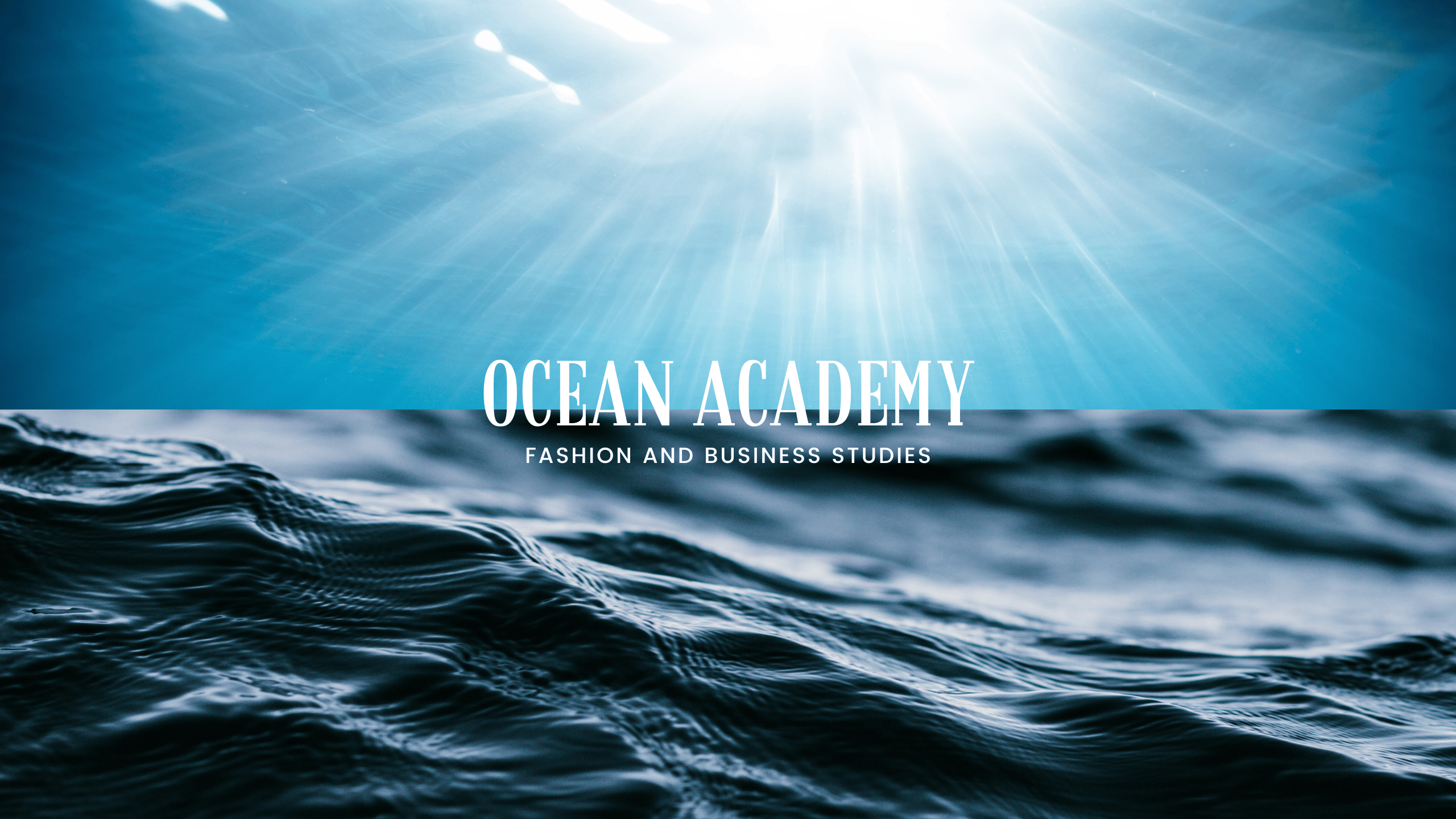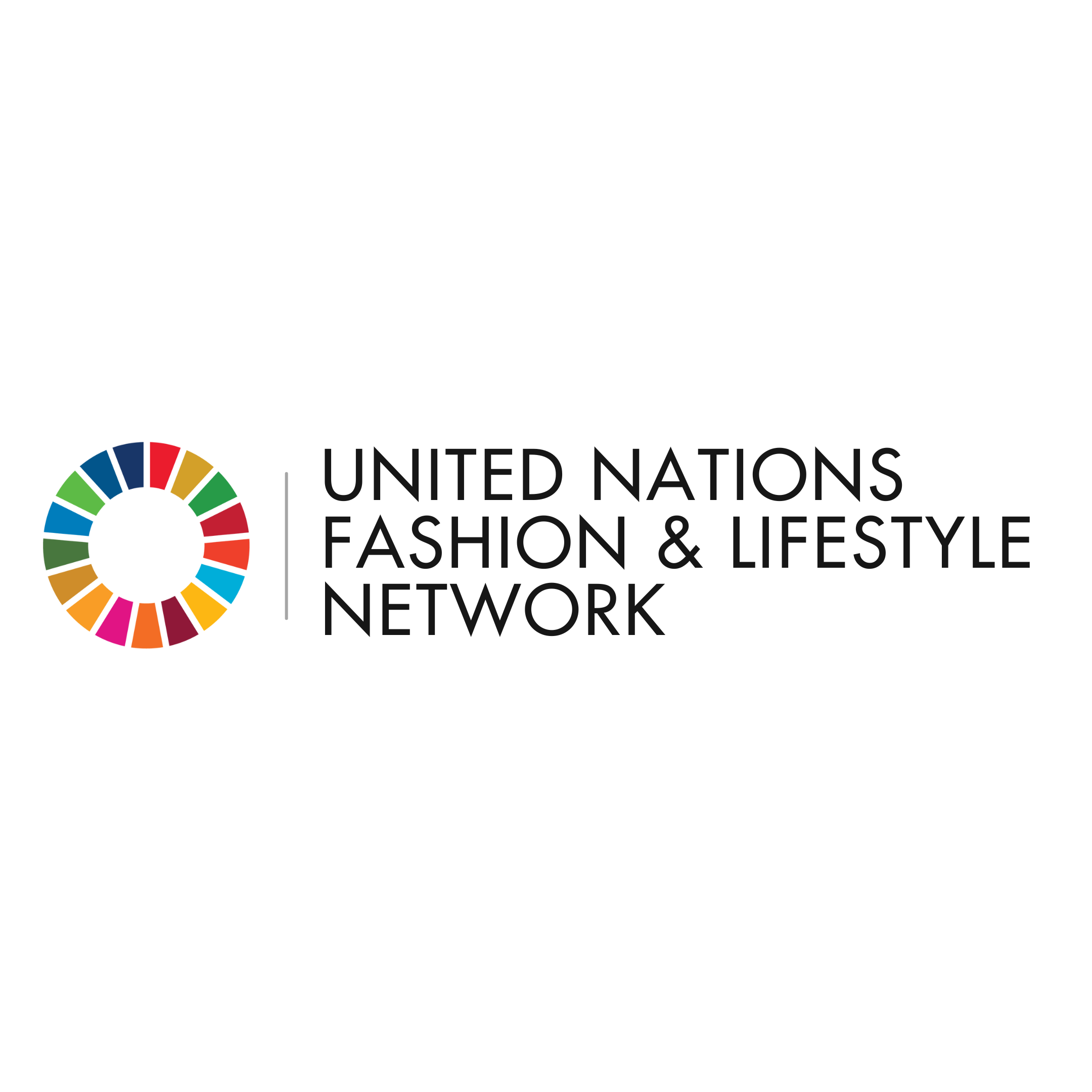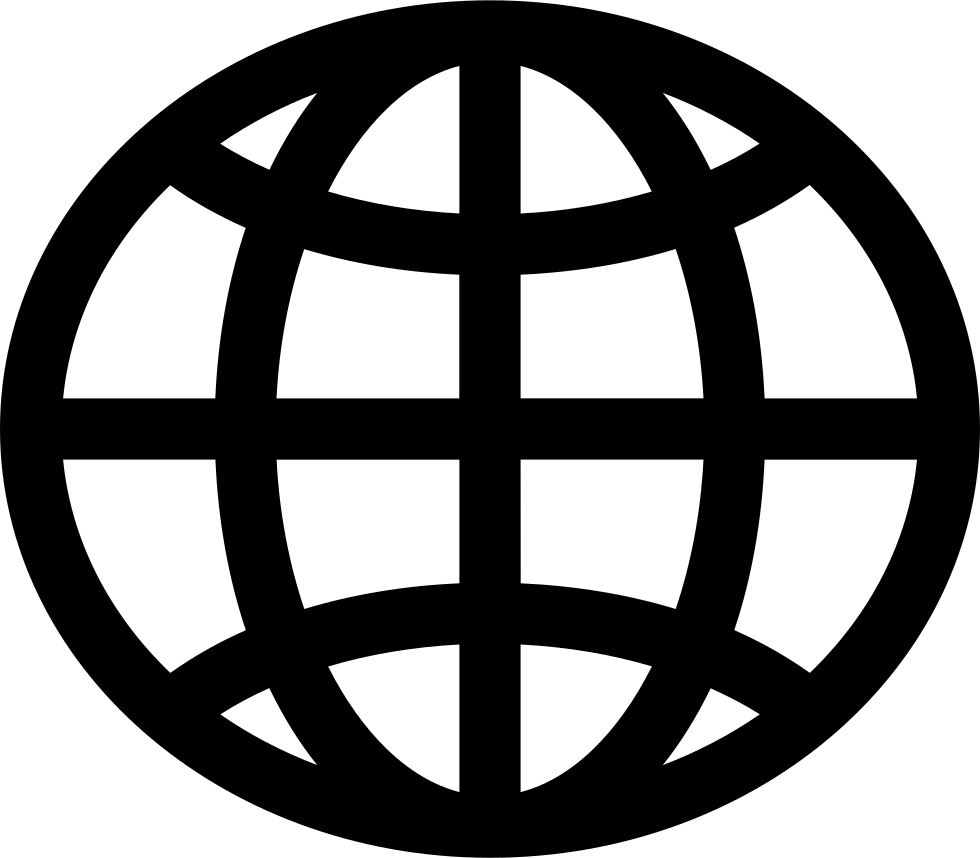Ocean Academy - Fashion and Business Studies
Design and Arts Hub APS
(
Non-governmental organization (NGO)
)
#SDGAction57017
Description
The Ocean Academy - Fashion and Business Studies is a program that has the goal to educate students in the African Diaspora and based in Africa on important topics such as fashion and business, from basics to advanced courses, as they can impact the economy and social development of entire countries. The final goal is to give the students the necessary tools to gain new skills and knowledge to navigate an industry that is strategic for the development of the African continent and its communities. By doing so, we aim to reduce the gap between the north and south of the world, making African designers and entrepreneurs more competitive and capable to participate in a global scale and to structured a strong regional market.
Due to the fact that there are not enough credited fashion schools in Africa with a global vision, and that not every student is able to afford to attend a private university, it is necessary to move from physical schools to online schools, by removing structural and geographic barriers, and making studies more equable and democratic. At the Ocean Academy we believe that the access to basic education in the fashion industry has to be fair: the modules will be published online and will be accessible from a mobile device in every country equipped with an internet connection.
The courses will be available in two ways:
- Online live lectures
- Recorded lectures accessible via the website, this however will only be available for registered students
The managerial body consists of:
- A board of professionals based in Africa and Europe (Italy) selected to design the modules based on the need of the African market. They will also be picking the topics, length of the course, the certifications to release, the methodology to evaluate the students and the final evaluation of the students. These professionals are university professors focused on fashion, as well as and sustainability consultants with a focus on the fashion sector.
- A growing and divers network of international teachers chosen by the board. The teachers will share their expertise and supporting the students with their diverse academic and professional background.
- A network of mentors available for the highest performing students, that give advice on building their business model and plan.
Events:
- Local events in Africa, annual or semi-annual, in collaboration with high schools or universities to promote the mentorship programs and the masterclasses in fashion, business and sustainability, with UNESCO technical partnership.
- Local events in Africa, yearly or semi-annual, organized in the context of the national fashion weeks in order to meet talents, the community and showcase our programs.
Benchmarking:
- Internal benchmarking: compare our program with the performance of previous years. This type of comparison is useful to know the performance status of the courses to see if it is improving and developing, or if it developing steadily or developing in a negative manner.
- External Benchmark: compare the programs performance with similar programs by other organization in the countries we operate in.
- Strategic Benchmarking: examine successful strategies that have led to competitive advantage and academic success, analyzing areas of strength and weakness, prioritizing areas of improvement and identifying new ideas that contribute to building a successful strategy.
Standards/Benchmarks:
- Leadership and management (institutional vision and leadership, strategy development, financial management and resource mobilization)
- Teaching and learning infrastructure and resources
- Development and implementation of online programs/courses
- Learner assessment and evaluation
- Learner support and progression
- Professional development and support for teachers and staff
Capacity building and technology transfer will be implemented through the creation of basic educational material regarding the fashion industry, through videos, audios and pdf presentations, photography archive online, exercises. The students will also be introduced to professionals and experts living abroad from the diaspora and from other cultures in order to give them access to broader knowledge. They will be exposed not only to the fashion industries local and regional dynamics but additionally they will receive data, to analyze international business cases, receive inputs coming from the global industry outside their region, have the opportunity to participate in international and comparative studies. At the center stage there wont only cultural topics but also technical, business and financial aspects in order to prepare future entrepreneurs and equip them with the tools to be able to give life to their companies, and eventually boost the economy of their towns and countries.
Design and Arts Hub coordinates the organization of the program:
- Recording of lessons and uploading of content to the website
- Selection of international teachers from different fields of studies (anthropology, fashion product development, 3D design, textile experts, sustainability and climate change experts, fashion designers, finance and fashion business)
- Coordination of two products: Live online lectures, recorded lectures
- Launch and supervision of online and offline social media campaigns to promote the courses, connecting with students around the African continent
- Extending the current international network of professionals in the fashion and design industries, and giving students the opportunity to have one on one sessions with mentors, including Q&A sessions, online group meetings and discussions, as well as offering internships to the students when such are available.
- Focusing on highly specialized education to give the opportunity to more Africans to benefit of high quality training and become the entrepreneurs of the future.
- Educating the designers as business entrepreneurs and/or product technicians and experts so they will be ready to receive consultancy and implement the strategies to enter the western market or to be more competitive in the African Market.
- Reaching the highest number possible of students, offering an online program, the students won’t be limited or influenced by political, infrastructural, geographical, bureaucratic barriers.
- Language barriers can eventually be resolved with AI and sophisticated translations tools
- Building professional bridges between Africa and Europe
- Introducing and reinforcing an education on sustainability, recycling and up-cycling, 3D design and the use of digital tools to keep the students informed on the impact of the fashion industry on our environment, teaching them how to build conscious businesses and train sustainable consultants for existing fashion companies.
UNESCO Nigeria
SDGS & Targets
Goal 4
Ensure inclusive and equitable quality education and promote lifelong learning opportunities for all
4.1
By 2030, ensure that all girls and boys complete free, equitable and quality primary and secondary education leading to relevant and effective learning outcomes
4.1.1
Proportion of children and young people (a) in grades 2/3; (b) at the end of primary; and (c) at the end of lower secondary achieving at least a minimum proficiency level in (i) reading and (ii) mathematics, by sex
4.1.2
Completion rate (primary education, lower secondary education, upper secondary education)
4.2
By 2030, ensure that all girls and boys have access to quality early childhood development, care and pre-primary education so that they are ready for primary education
4.2.1
Proportion of children aged 24–59 months who are developmentally on track in health, learning and psychosocial well-being, by sex
4.2.2
Participation rate in organized learning (one year before the official primary entry age), by sex
4.3
By 2030, ensure equal access for all women and men to affordable and quality technical, vocational and tertiary education, including university
4.3.1
Participation rate of youth and adults in formal and non-formal education and training in the previous 12 months, by sex
4.4
By 2030, substantially increase the number of youth and adults who have relevant skills, including technical and vocational skills, for employment, decent jobs and entrepreneurship
4.4.1
Proportion of youth and adults with information and communications technology (ICT) skills, by type of skill
4.5
4.5.1
Parity indices (female/male, rural/urban, bottom/top wealth quintile and others such as disability status, indigenous peoples and conflict-affected, as data become available) for all education indicators on this list that can be disaggregated
4.6
By 2030, ensure that all youth and a substantial proportion of adults, both men and women, achieve literacy and numeracy
4.6.1
Youth/adult literacy rate
4.7
By 2030, ensure that all learners acquire the knowledge and skills needed to promote sustainable development, including, among others, through education for sustainable development and sustainable lifestyles, human rights, gender equality, promotion of a culture of peace and non-violence, global citizenship and appreciation of cultural diversity and of culture’s contribution to sustainable development
4.7.1
Extent to which (i) global citizenship education and (ii) education for sustainable development are mainstreamed in (a) national education policies; (b) curricula; (c) teacher education and (d) student assessment
4.a
Build and upgrade education facilities that are child, disability and gender sensitive and provide safe, non-violent, inclusive and effective learning environments for all
4.a.1
Proportion of schools offering basic services, by type of service
4.b
4.b.1
Volume of official development assistance flows for scholarships
4.c
By 2030, substantially increase the supply of qualified teachers, including through international cooperation for teacher training in developing countries, especially least developed countries and small island developing States
4.c.1
Proportion of teachers with the minimum required qualifications, by education level
Goal 5
Achieve gender equality and empower all women and girls
5.1
End all forms of discrimination against all women and girls everywhere
5.1.1
Whether or not legal frameworks are in place to promote, enforce and monitor equality and non‑discrimination on the basis of sex
5.2
5.2.1
Proportion of ever-partnered women and girls aged 15 years and older subjected to physical, sexual or psychological violence by a current or former intimate partner in the previous 12 months, by form of violence and by age
5.2.2
Proportion of women and girls aged 15 years and older subjected to sexual violence by persons other than an intimate partner in the previous 12 months, by age and place of occurrence
5.3
5.3.1
Proportion of women aged 20-24 years who were married or in a union before age 15 and before age 18
5.3.2
Proportion of girls and women aged 15-49 years who have undergone female genital mutilation/cutting, by age
5.4
Recognize and value unpaid care and domestic work through the provision of public services, infrastructure and social protection policies and the promotion of shared responsibility within the household and the family as nationally appropriate
5.4.1
Proportion of time spent on unpaid domestic and care work, by sex, age and location
5.5
Ensure women’s full and effective participation and equal opportunities for leadership at all levels of decision-making in political, economic and public life
5.5.1
Proportion of seats held by women in (a) national parliaments and (b) local governments
5.5.2
Proportion of women in managerial positions
5.6
Ensure universal access to sexual and reproductive health and reproductive rights as agreed in accordance with the Programme of Action of the International Conference on Population and Development and the Beijing Platform for Action and the outcome documents of their review conferences
5.6.1
Proportion of women aged 15-49 years who make their own informed decisions regarding sexual relations, contraceptive use and reproductive health care
5.6.2
Number of countries with laws and regulations that guarantee full and equal access to women and men aged 15 years and older to sexual and reproductive health care, information and education
5.a
Undertake reforms to give women equal rights to economic resources, as well as access to ownership and control over land and other forms of property, financial services, inheritance and natural resources, in accordance with national laws
5.a.1
(a) Proportion of total agricultural population with ownership or secure rights over agricultural land, by sex; and (b) share of women among owners or rights-bearers of agricultural land, by type of tenure
5.a.2
Proportion of countries where the legal framework (including customary law) guarantees women’s equal rights to land ownership and/or control
5.b
5.b.1
Proportion of individuals who own a mobile telephone, by sex
5.c
Adopt and strengthen sound policies and enforceable legislation for the promotion of gender equality and the empowerment of all women and girls at all levels
5.c.1
Proportion of countries with systems to track and make public allocations for gender equality and women’s empowerment
Goal 12
Ensure sustainable consumption and production patterns
12.1
Implement the 10-Year Framework of Programmes on Sustainable Consumption and Production Patterns, all countries taking action, with developed countries taking the lead, taking into account the development and capabilities of developing countries
12.1.1
Number of countries developing, adopting or implementing policy instruments aimed at supporting the shift to sustainable consumption and production
12.2
By 2030, achieve the sustainable management and efficient use of natural resources
12.2.1
Material footprint, material footprint per capita, and material footprint per GDP
12.2.2
Domestic material consumption, domestic material consumption per capita, and domestic material consumption per GDP
12.3
By 2030, halve per capita global food waste at the retail and consumer levels and reduce food losses along production and supply chains, including post-harvest losses
12.3.1
(a) Food loss index and (b) food waste index
12.4
By 2020, achieve the environmentally sound management of chemicals and all wastes throughout their life cycle, in accordance with agreed international frameworks, and significantly reduce their release to air, water and soil in order to minimize their adverse impacts on human health and the environment
12.4.1
12.4.2
(a) Hazardous waste generated per capita; and (b) proportion of hazardous waste treated, by type of treatment
12.5
By 2030, substantially reduce waste generation through prevention, reduction, recycling and reuse
12.5.1
National recycling rate, tons of material recycled
12.6
Encourage companies, especially large and transnational companies, to adopt sustainable practices and to integrate sustainability information into their reporting cycle
12.6.1
12.7
Promote public procurement practices that are sustainable, in accordance with national policies and priorities
12.7.1
Number of countries implementing sustainable public procurement policies and action plans
12.8
By 2030, ensure that people everywhere have the relevant information and awareness for sustainable development and lifestyles in harmony with nature
12.8.1
Extent to which (i) global citizenship education and (ii) education for sustainable development are mainstreamed in (a) national education policies; (b) curricula; (c) teacher education; and (d) student assessment
12.a
Support developing countries to strengthen their scientific and technological capacity to move towards more sustainable patterns of consumption and production
12.a.1
Installed renewable energy-generating capacity in developing and developed countries (in watts per capita)
12.b
Develop and implement tools to monitor sustainable development impacts for sustainable tourism that creates jobs and promotes local culture and products
12.b.1
Implementation of standard accounting tools to monitor the economic and environmental aspects of tourism sustainability
12.c
Rationalize inefficient fossil-fuel subsidies that encourage wasteful consumption by removing market distortions, in accordance with national circumstances, including by restructuring taxation and phasing out those harmful subsidies, where they exist, to reflect their environmental impacts, taking fully into account the specific needs and conditions of developing countries and minimizing the possible adverse impacts on their development in a manner that protects the poor and the affected communities
12.c.1
Amount of fossil-fuel subsidies (production and consumption) per unit of GDP
SDG 14 targets covered
| Name | Description |
|---|
Deliverables & Timeline
Social Media Campaigns to create awareness and reach the highest number of views and engagement regarding the educational program
Finding new partners and sponsor to release scholarships or/and internships programs for a selected group of students
Finding new partners and sponsors to support the effort to generate more awareness and engagement globally but specifically in Africa
Continuous Student Registration to the educational programs
Resources mobilized
Partnership Progress

Feedback
Action Network

Timeline
Entity
Region
- Africa
- Europe
- North America
- Latin America and the Caribbean
- Global
Geographical coverage
Other beneficiaries
Entrepreneurs active in the fashion industry from the diaspora or based in Africa:
- Fashion shop owners
- Tailors and seamstresses
- Artisans
- Fashion designers
- Self-taught individuals - students with no previous education ( from 18 years old) - adults with interest in launching their fashion business or working in the fashion industry
More information
Countries

Contact Information
Imo Daniel Ekanem, President Design and Arts Hub APS

